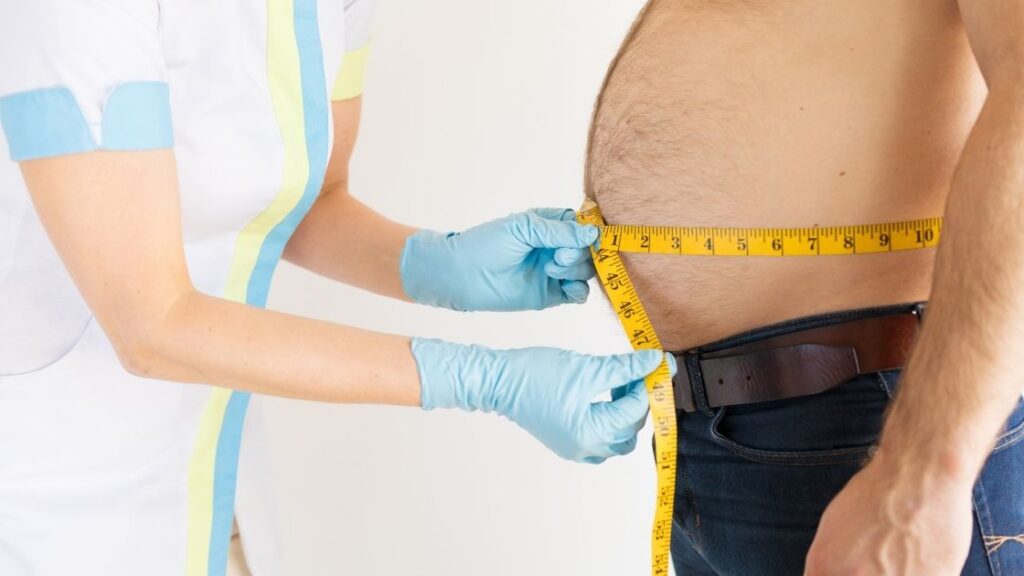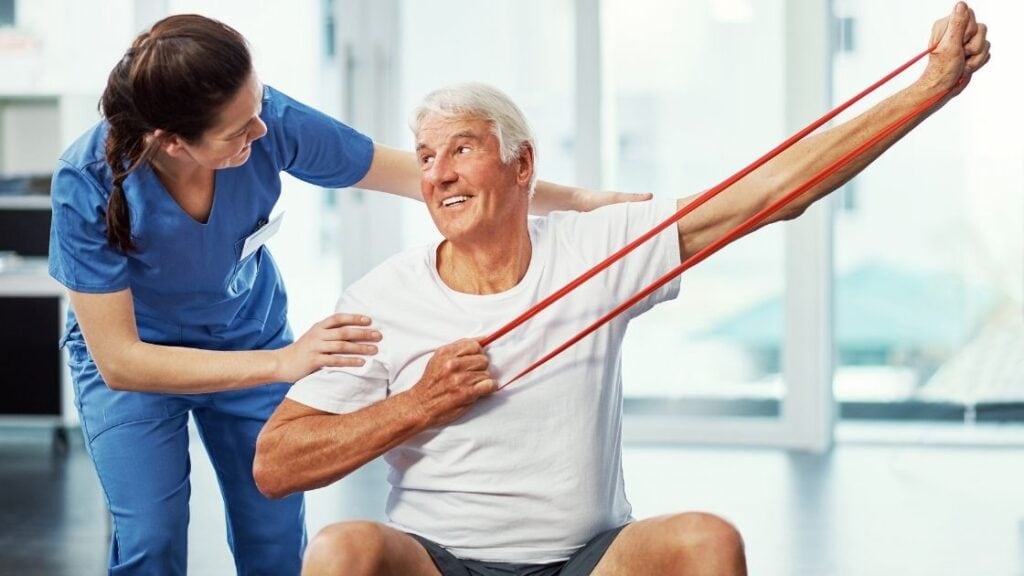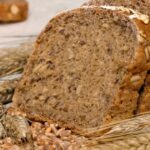- Losing weight does not necessarily mean losing body fat
- Focusing on losing body fat is important for overall health
- Consuming whole grains and protein can support muscle growth and fat loss
- Strength training is crucial for losing body fat and increasing metabolism
- It’s important to assess progress by how your clothes fit and how you feel rather than just relying on the scale
Losing weight is one thing, but body fat is probably what you want to target and get rid of.
Forget the myth – if you step on the scale, the number you see does not clearly indicate what you want to lose because you are looking at the weight of your body composition.
This combined number on the scale includes your muscles, bones, fat, and organs, all lumped together by a few digits.
Losing excessive fat is usually a great idea, but losing muscles?
No, that will not be the wisest decision.
If you want to lose weight, that’s fine, but do it responsibly. There is no magic cure to lose weight fast.
Muscle loss is a common concern for individuals who are trying to lose weight.
However, focusing on losing body fat rather than just overall weight is important.
Whole grains are a great addition to a balanced diet when trying to lose body fat.
They provide essential nutrients and fiber, which can help with muscle growth and fat loss.
Read this guide to understand the problem if you are losing weight rapidly without losing visceral fat.
You also learn about weight management to lose excess weight.
Losing Weight but Not Body Fat
As we’ve mentioned, most fast weight loss programs may not be the healthiest option, and you can still lose weight fast in various beneficial ways.
It’s also important to remember that the number on your scale is mainly represented by your water weight – a crucial element you need to survive.
Regarding weight loss, the number of reps you do during exercise is not as important as the overall amount of work you put in.
Finding a routine that challenges your muscles and promotes muscle growth is important.
How to lose weight?
Dieting plays a significant role in weight loss progress.
While it’s true that consuming fewer calories can lead to weight loss, it’s important to ensure that you’re still getting enough nutrients and energy from your diet.
Going on a low-carb diet may result in rapid weight loss, but it can also lead to muscle loss and a slowed metabolism.
To prevent muscle loss and promote fat loss, it’s crucial to consume plenty of protein.
Protein helps to preserve muscle mass and keeps you feeling full.
Additionally, consuming a balanced diet that includes a variety of nutrient-dense foods can support your weight loss goals.
When trying to lose body fat, it’s essential to create a calorie deficit by consuming fewer calories than your body needs.
However, it’s important to find the right balance.
Consuming too few calories can actually hinder your weight loss progress by causing your body to break down muscle mass for energy.
Aerobic exercise, such as running or cycling, is often seen as the only way to burn fat.
While aerobic exercise is beneficial for overall health and can aid in weight loss, it’s not the only way to lose body fat.
Strength training is equally important, as it helps to build muscle mass and increase metabolism, leading to more effective fat burning.
Incorporating strength training into your workouts is crucial for losing body fat.
Strength training helps to increase muscle mass, which in turn helps to burn more fat.
Additionally, strength training can improve cardiovascular health and increase overall calorie burn.
In order to see the best results, it’s important to eat a balanced diet that includes enough calories to support your workouts.
Consuming lean proteins and dietary fiber can help with muscle growth and fat loss.
Additionally, it’s important to fuel your body with nutritious foods rather than relying solely on supplements.
By focusing on consuming enough calories and incorporating strength training into your workouts, you can lose body fat while gaining lean muscle mass.
Remember, not all fat is harmful to the body, as our bodies also contain healthy fats.
It’s important to focus on creating healthy habits, increasing physical activity, and avoiding saturated fats to support overall weight loss.
Read on to find out how you can do healthy weight loss while staying healthy and what may be causing you to lose weight but not fat.
You are Eating Too Few Calories
You may think that the fewer calories you consume, the more fat you will burn, but that might not be the best mindset if you want to lose weight fast.
Suppose you don’t consume enough calories regularly.
In that case, your body goes into survival mode to break down muscle mass for energy.
You can think that taking a few calories can accelerate your weight loss effort, and then you might have a misconception on your mind.
Few calories can’t do proper weight reduction as healthy eating habits.

Your body doesn’t care about building muscle to save calories in an extreme calorie deficit.
This will make you lose muscle mass instead of burning stubborn body fat.
Secondly, an excessive calorie deficiency may also influence your metabolic function.
This, in turn, affects your hormones, which then slows down fat loss and increases cortisol levels.
High cortisol levels will further affect your body, making it struggle to burn excessive fat.
Creating healthy habits and avoiding processed food can lead you to successful weight loss.
You should instead take a page from obesity diets that follow a VLDC (Very Low-Calorie Diet) or an LCD (Low-Calorie Diet), proving just how vital calories are for losing fat.
To lose fat without losing lean muscle mass, you will need to consume at least 8 calories per pound of body weight each day.
This is the perfect way to see a positive change in your weight loss journey and start noticing the loss of excessive fat instead of muscle.
You Are Losing Weight Too Quickly
Who would have thought that losing weight too quickly is not only unhealthy but it’s actually not helpful for losing fat?
According to recent international studies, the rate at which weight is lost is associated with loss of mass that has nothing to do with it.
This results in fat-free weight loss, so you won’t see the results you are working so hard for.
Instead, strive for gradual weight loss and to get rid of excessive body fat.

As we’ve illustrated, losing weight rapidly is not helpful to your weight loss journey.
Losing weight slowly can greatly assist you in reducing fat mass instead of muscle mass, which is essential for healthy living.
You Are Not Strength Training
By building muscle, you are essentially losing body fat.
Muscle tissue is seen as metabolically active, so it helps your body expend energy and maintain and build on existing muscle.
With muscle mass making up almost 20% of daily energy usage, fat mass only accounts for abo 5%.
Suppose you are not focusing on strength training but only reducing calories and doing cardio exercises; you will not decrease your body fat percentage.

You should remember that strength training increases your heart rate, forcing your body to use your fat as fuel to produce the necessary energy for the workouts.
Strength training is the perfect way to increase heart rate and cardiovascular health while also burning fat.
Now, you will be using fat to fuel your workouts! Wave bye-bye to workouts without energy.
If you are not strength training regularly, you will be reducing your chances of losing fat.
Strength training is the perfect workout to incorporate into your daily exercise regime if you want to bring about results faster.
Increasing physical activity also controls high blood pressure and cholesterol and reduces the risk of heart disease, blood sugar, and diabetes.
Physical activity also adds extra calories and helps you reach your weight loss goal.
Reading the Scale
Once you have incorporated strength training into your workouts, it’s time to see those results in nutrition.
Just remember to incorporate calories into the strength training.
Instead of solely relying on the scale, assessing your progress by how your clothes fit and how you feel in your body is important.
Taking measurements of your thighs, waist, and upper arms can also provide a more accurate representation of your body size changes.
When you are new at strength training, you do not actually want to see the scale number drop – you want to see it level.
Assessing Your Progress
Suppose you’re a good girl (or guy), and you’re sticking to your calorie intake and strength training while not indulging in your usual guilty t eats.
In that case, you should start to assess your progress and celebrate.
The most helpful way to see your progress is to see how your clothes fit and how you look in the mirror.

Taking measurements of your thighs, waist, and upper arms can also guide you to exactly how your body size changes.
Just remember that you are strength training, so the muscle will build up.
Many women opt to get their body fat tested, which is another way to see the exact fat mass percentage.
This is done through several medical methods; skin caliper tests and hydrostatic underwater weighing are just two ways you can get these tests to measure actual fat mass.
A weight loss plan is also very important.
Without a proper weight loss plan, you can measure your progress and also not be able to check for rapid weight loss.
Eat and Train Smart
So there you have it! Eat your calories and strength train.
This can ultimately solve problems with losing weight but not fat.
Lift those weights and see the fat melt away.
Strength training and calorie intake are also essential to an overall active lifestyle.
You can do this by taking regular walks or running.
The intensity of workouts should also be increased from time to time to ensure the ultimate results.
With calorie intake, you mustn’t get it through supplements alone but through nutritious foods that provide natural calories.
Lean proteins can support the growth of lean muscle mass, and dietary fiber can help you to control your calorie intake while encouraging fat loss.
As with the minimum amount of calories needed depending on your overall weight, protein should also be taken in at a minimum of 0.8 grams of protein per kilogram of your body weight.
If you take your strength training seriously, you may take in more protein to compensate for burning energy.
Calories and Dumbbells – Embrace Them
By reading this guide, you have hopefully noticed the importance of consuming enough calories while including strength training in your workouts.
By focusing on these important factors, you should lose more fat while gaining enough lean muscle mass.
Follow this guide, and you will lose weight fast, where you want to lose it.
Don’t think that every fat is harmful to the human body.
Our body also contains healthy fat, which is very important to us.
Do not give much concern with these.
Avoid saturated fat, maintain weight, increase physical activity, and create healthy habits.
All of these can lead to losing weight.
Stay with us.
We are sharing many important topics on our blog.
Share this article with your friend. They might find it more useful.






